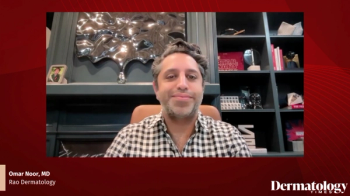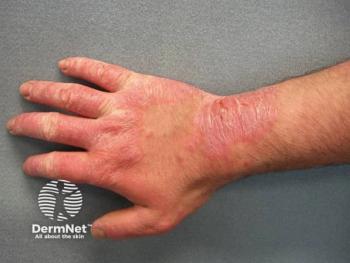
Christopher Bunick, MD, PhD, Previews RAD 2025: Raising the Bar in Atopic Dermatitis Care

Discover how the RAD conference in Nashville enhances atopic dermatitis care, featuring expert insights and patient-focused strategies for clinicians.
As clinicians look ahead to the upcoming
In a recent interview with Dermatology Times, Bunick shared his enthusiasm for the RAD conference and highlighted the critical role such events play in advancing clinical knowledge and improving patient outcomes.
“One of the most important things that a meeting like RAD can do is to teach dermatologists about all of the components needed to elevate the standard of care of atopic dermatitis patients,” he said.
Elevating the Standard of Care
Atopic dermatitis (AD) management continues to evolve rapidly with a growing number of targeted therapies in development and already approved. Bunick emphasizes the RAD conference as a key educational moment for clinicians to stay abreast of emerging treatment goals and benchmarks.
“Going to a meeting like RAD allows a learner to really understand how there are new benchmarks, how to achieve optimal treatment targets and minimal disease activity,” he explained.
The upcoming talk by Bunick will explore the scientific rationale and therapeutic potential of targeting the OX40-OX40L pathway—a T-cell co-stimulatory axis implicated in the chronic inflammation of AD. Bunick noted the session aims to help clinicians critically assess clinical trial data and pipeline therapies.
“All the therapies that we're using and how those therapies are trying to get those patients to that optimal treatment target” will be part of the discussion, he said.
Clinical Practice and Pipeline Awareness
With more therapeutic choices comes greater responsibility for clinicians to make nuanced decisions based on disease severity, patient comorbidities, and long-term outcomes. Bunick sees RAD as essential to this process: “A meeting like RAD is essential for learning how to better manage our atopic dermatitis patients and hit those optimal treatment targets with the therapies that we have and to learn about all the therapies that are in development for atopic dermatitis.”
Why Attend RAD 2025?
Bunick also made a compelling case for why dermatologists should prioritize attending this year's RAD meeting:
- Location and Energy:
“It’s in an incredibly fun city, Nashville, Tennessee,” he said, adding a personal note: “I was born and raised in Tennessee, and I can tell you Nashville is a fun place to be.” - Top-Tier Faculty:
Attendees can expect expert-led sessions from the leading voices in AD research and clinical care. “You're going to have some of the top experts in atopic dermatitis education there teaching, and so you're bound to learn more than you ever could have hoped for about atopic dermatitis,” Bunick shared. - Patient-Centered Focus:
Ultimately, RAD is about translating cutting-edge science into better outcomes. “The best reason to attend is it's all about the patient. This is about making the patients better, and you will take home pearls that help you help your patients better than ever,” he concluded.
Final Thoughts
As the treatment landscape for AD becomes increasingly complex, conferences like RAD provide clinicians with an invaluable opportunity to refine their knowledge, exchange ideas with peers, and engage directly with thought leaders like Bunick. His lecture on the OX40-OX40L axis will be a key session for those looking to understand the next frontier in AD immunotherapy.
To hear more about OX40 inhibition from Bunick,
Newsletter
Like what you’re reading? Subscribe to Dermatology Times for weekly updates on therapies, innovations, and real-world practice tips.



















